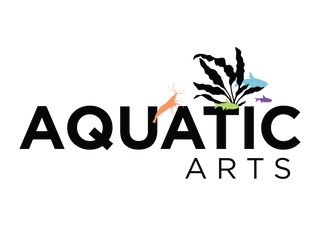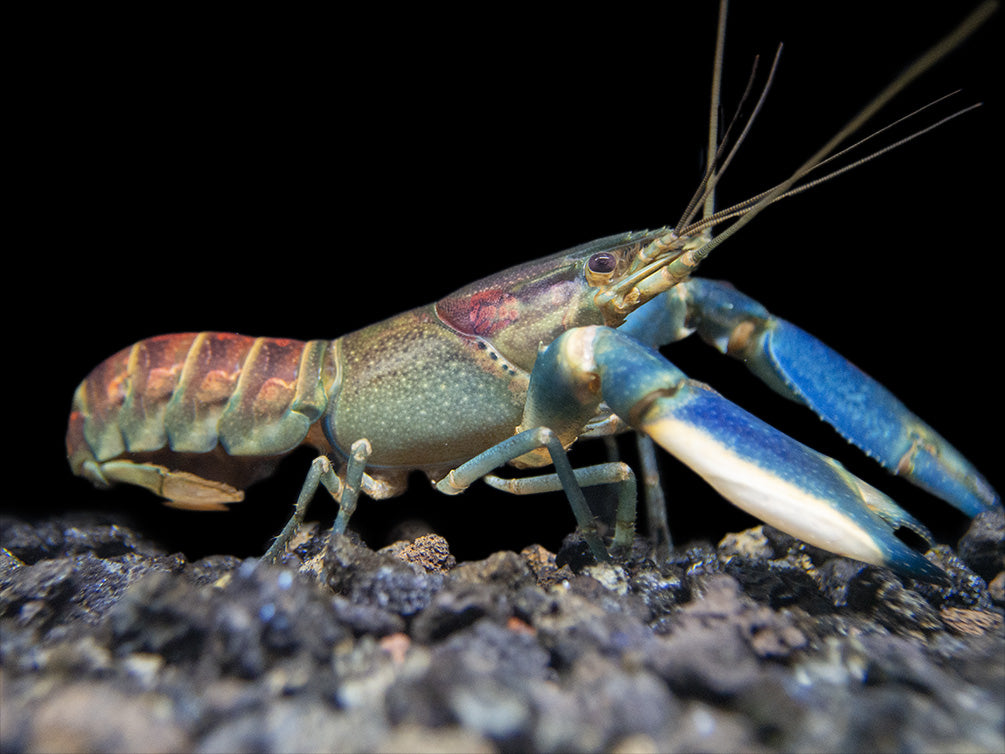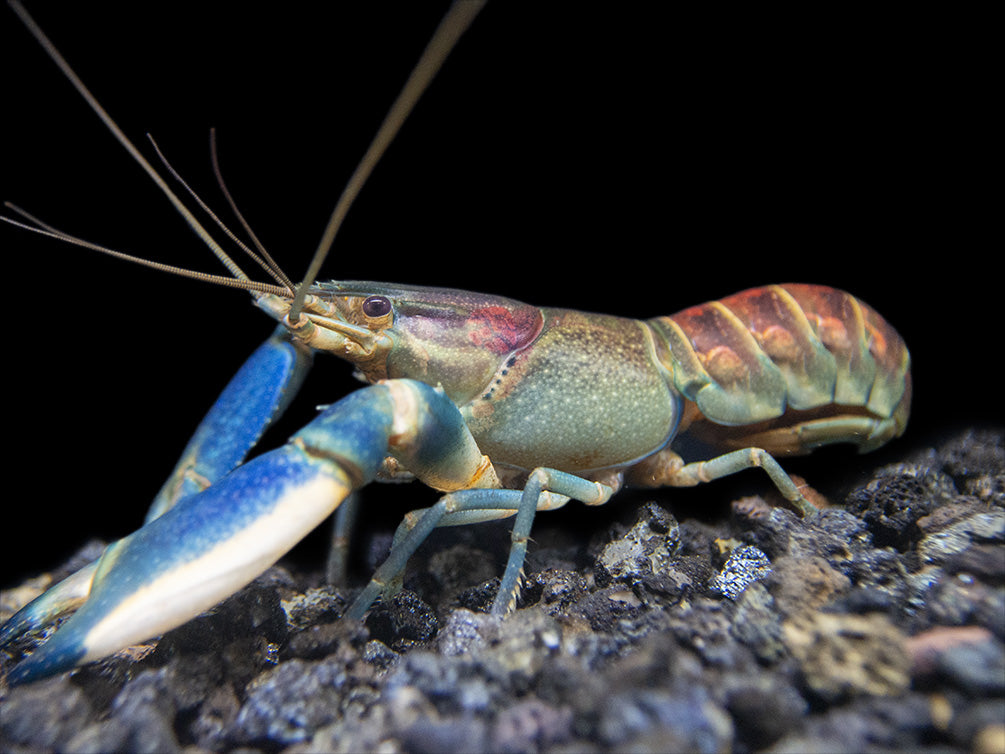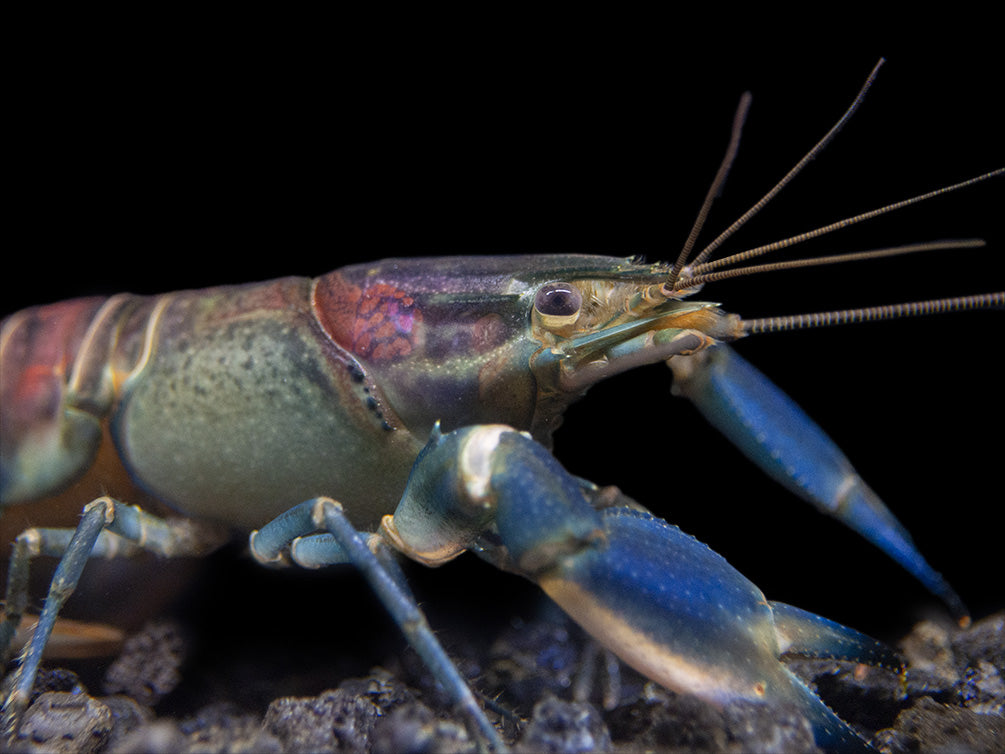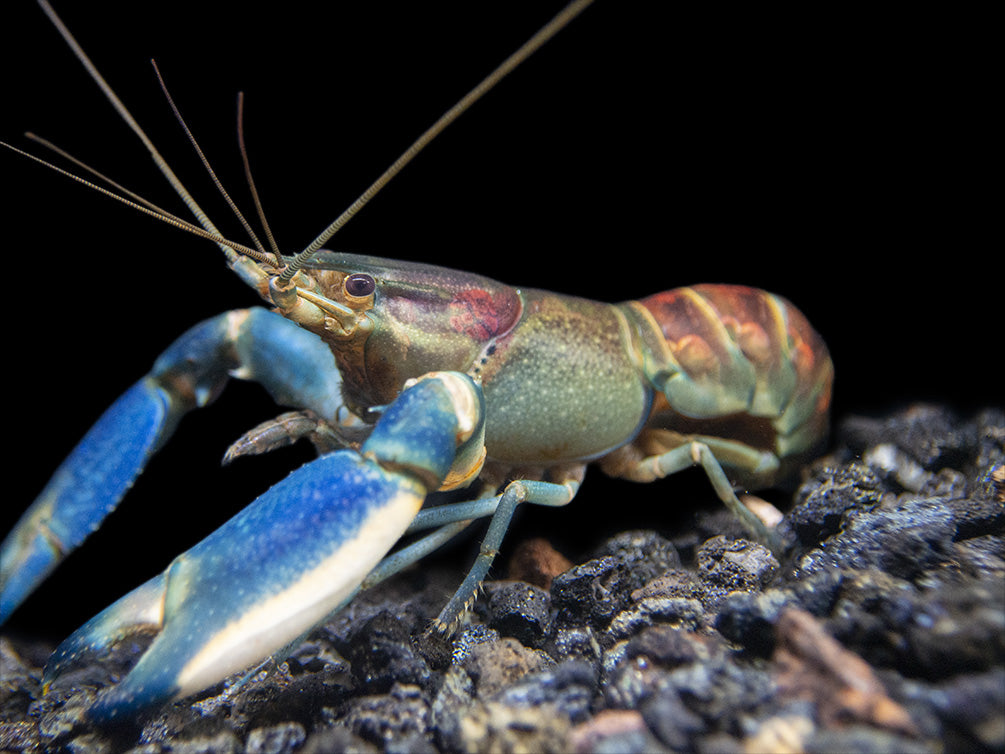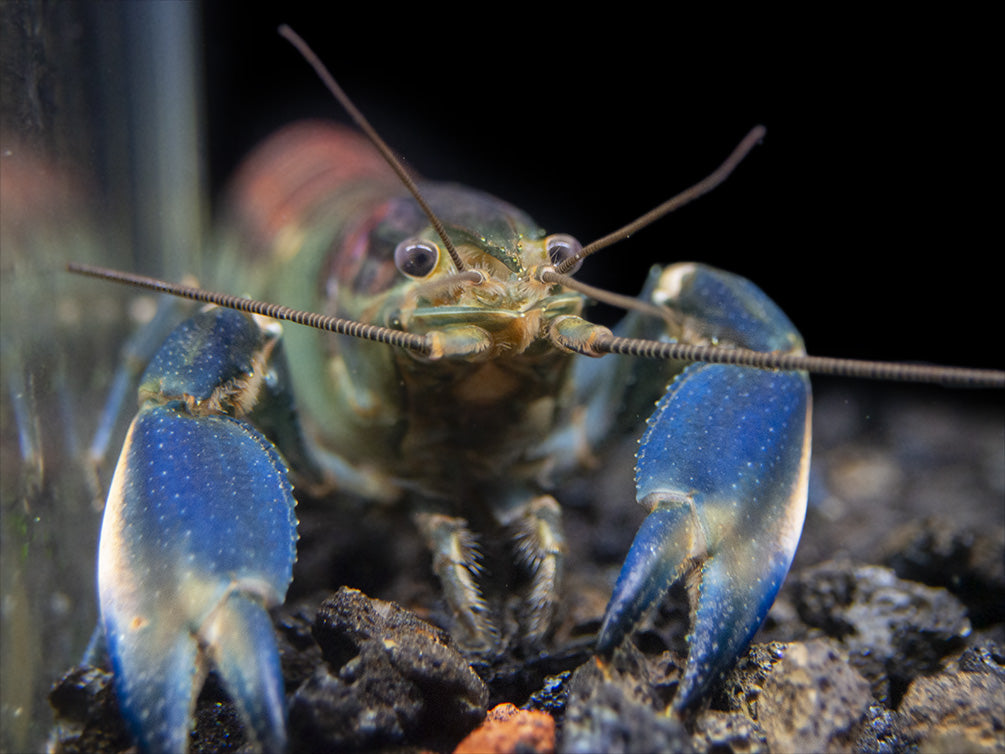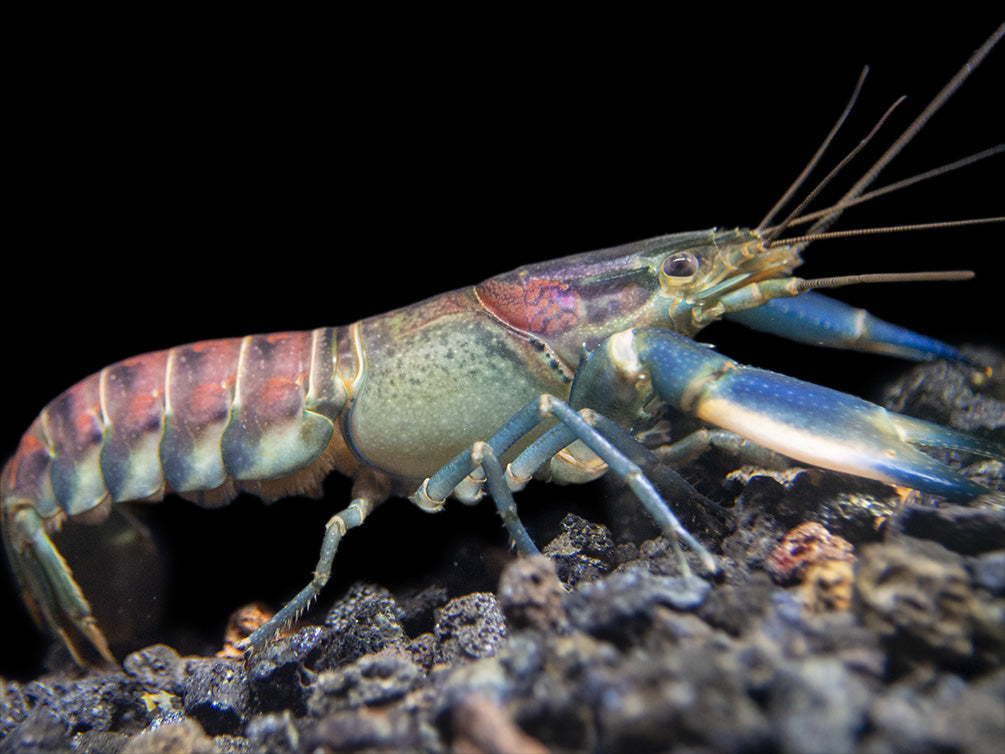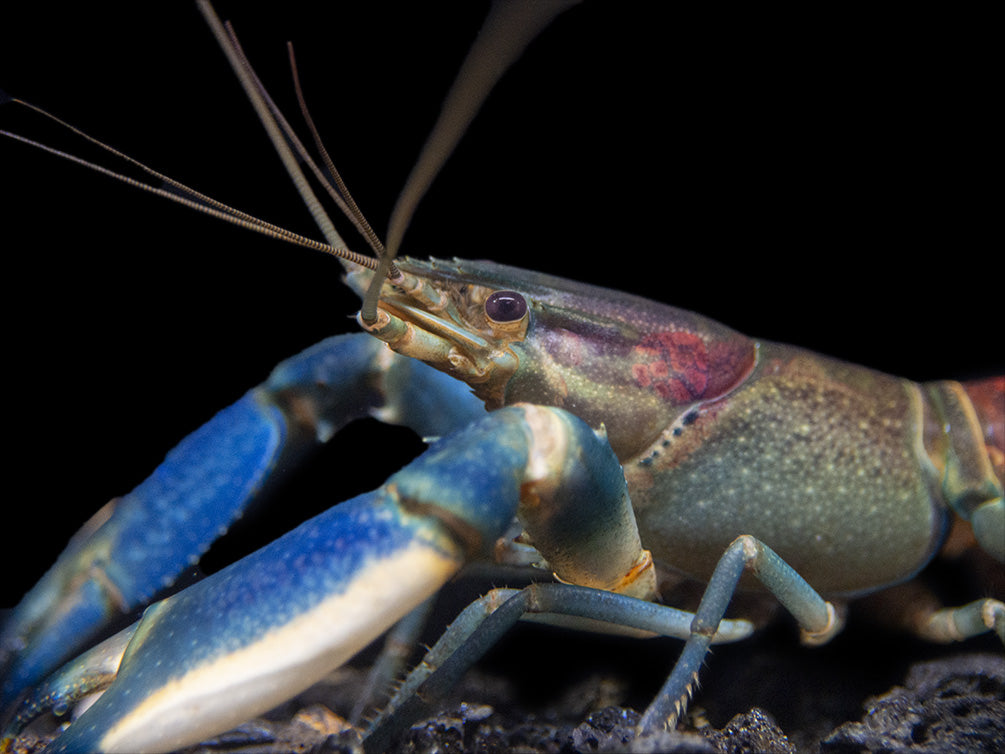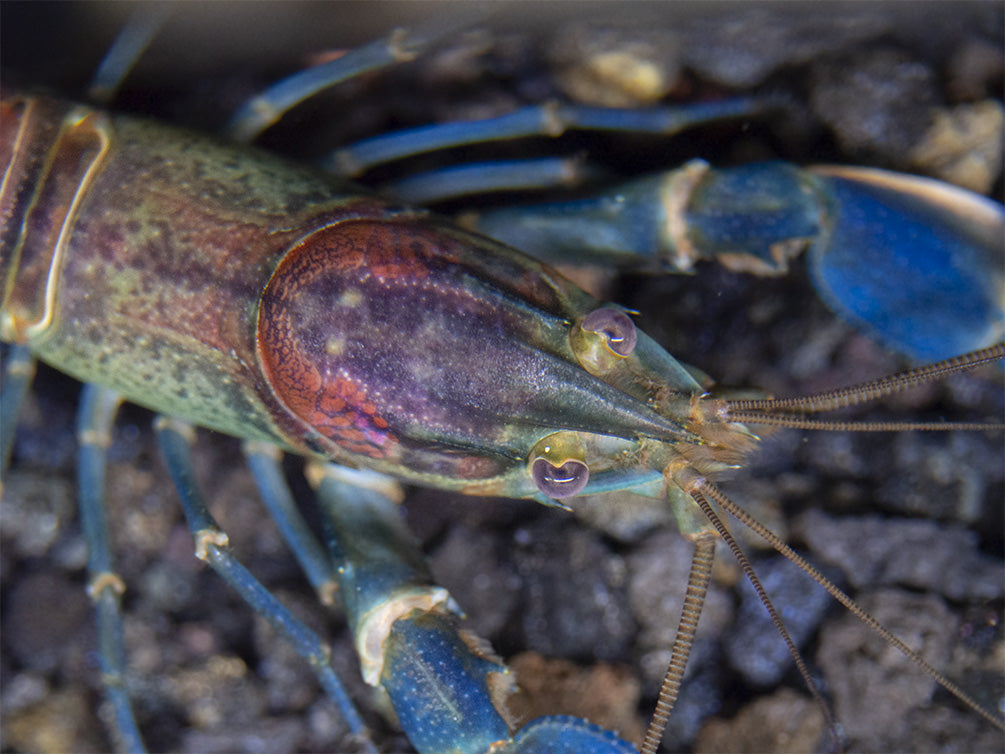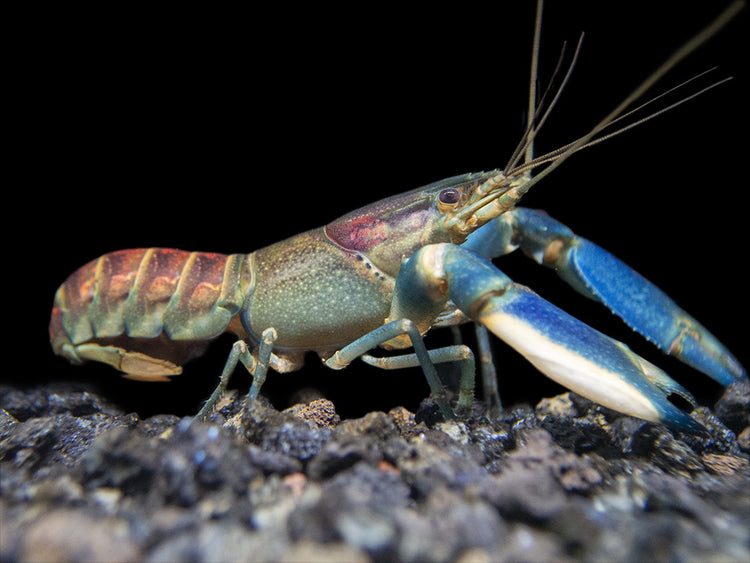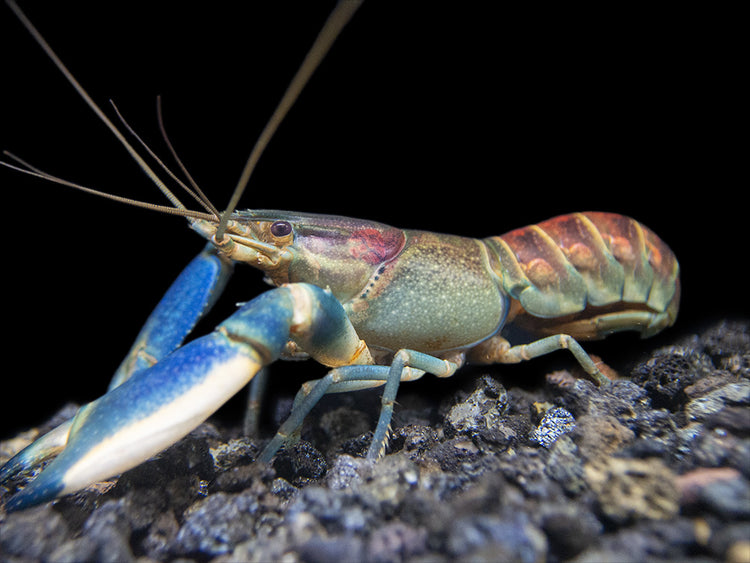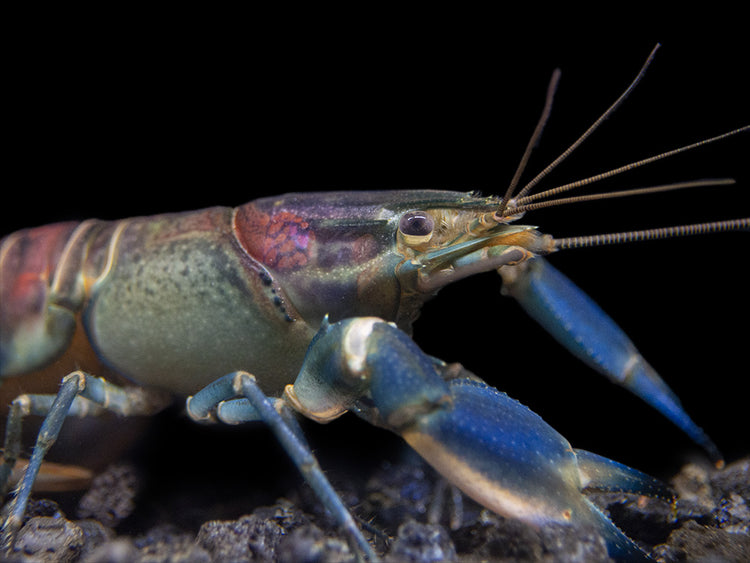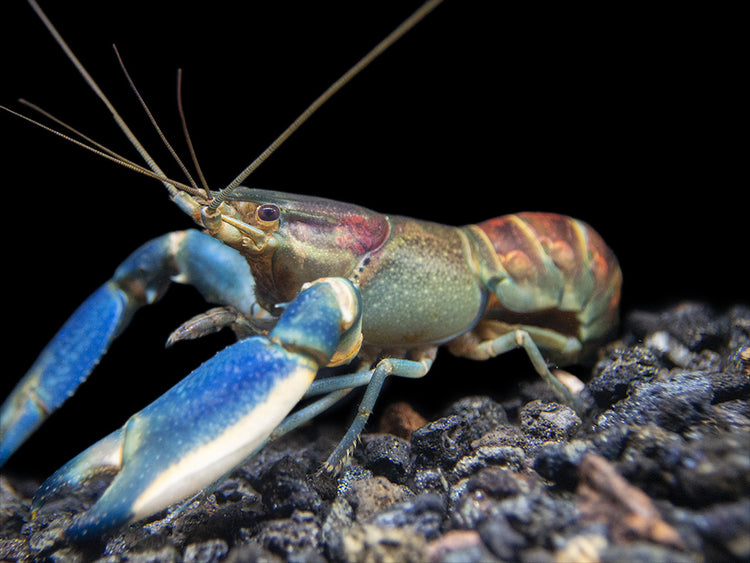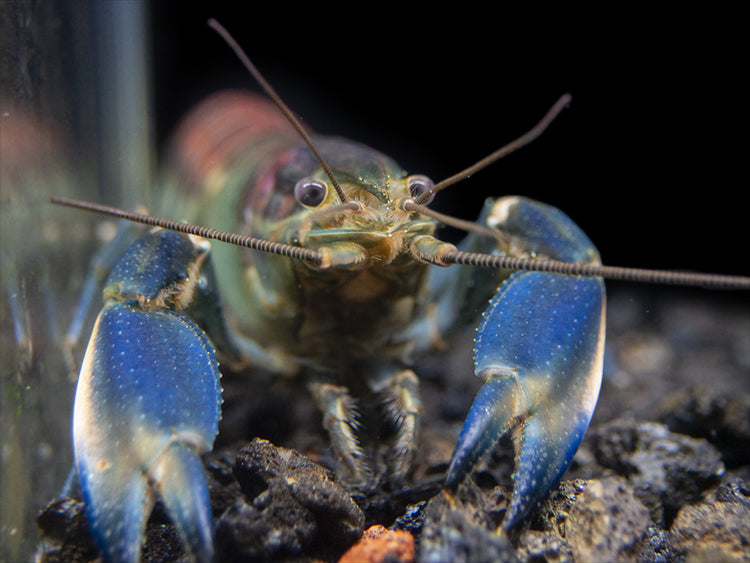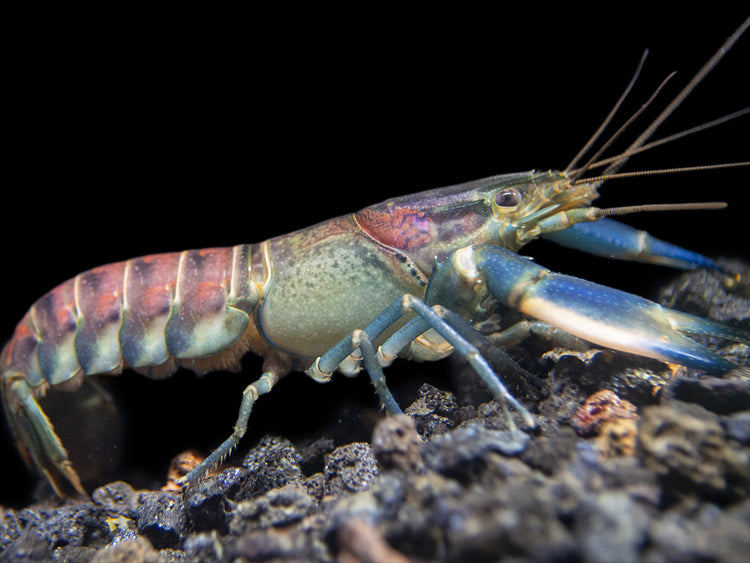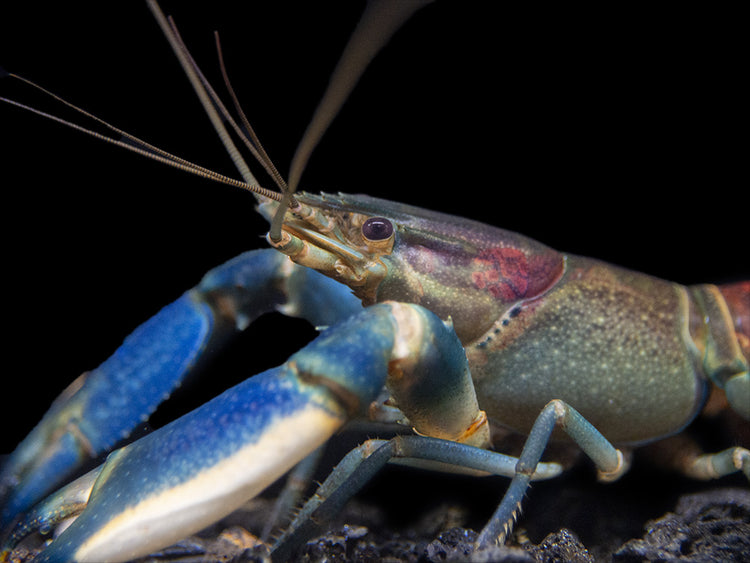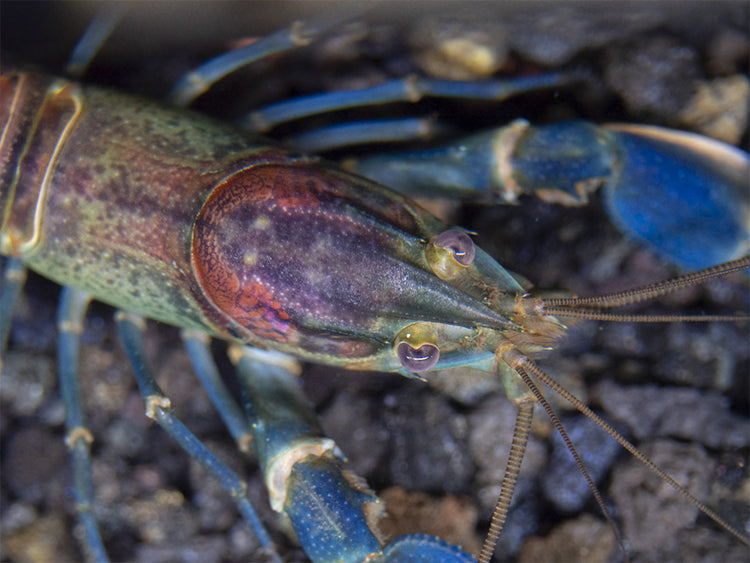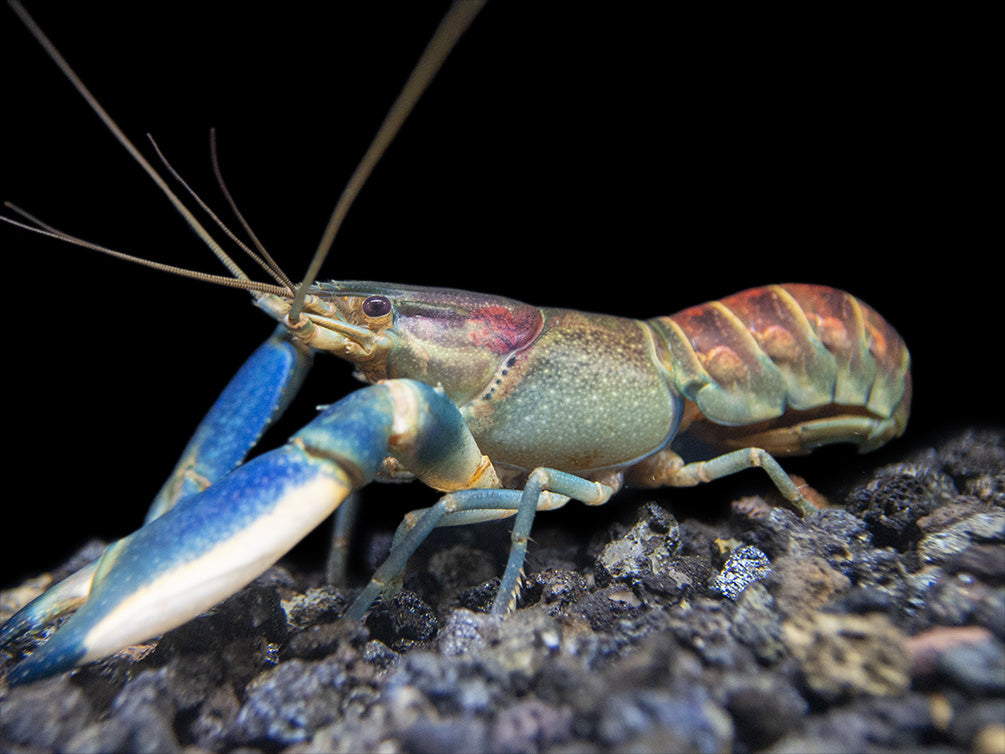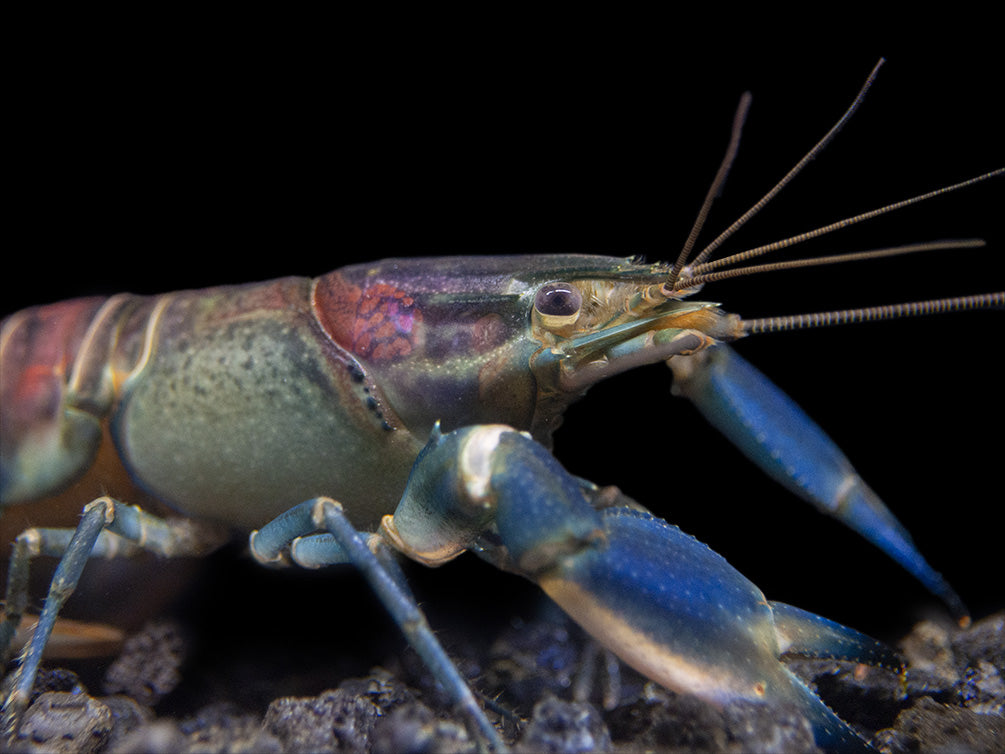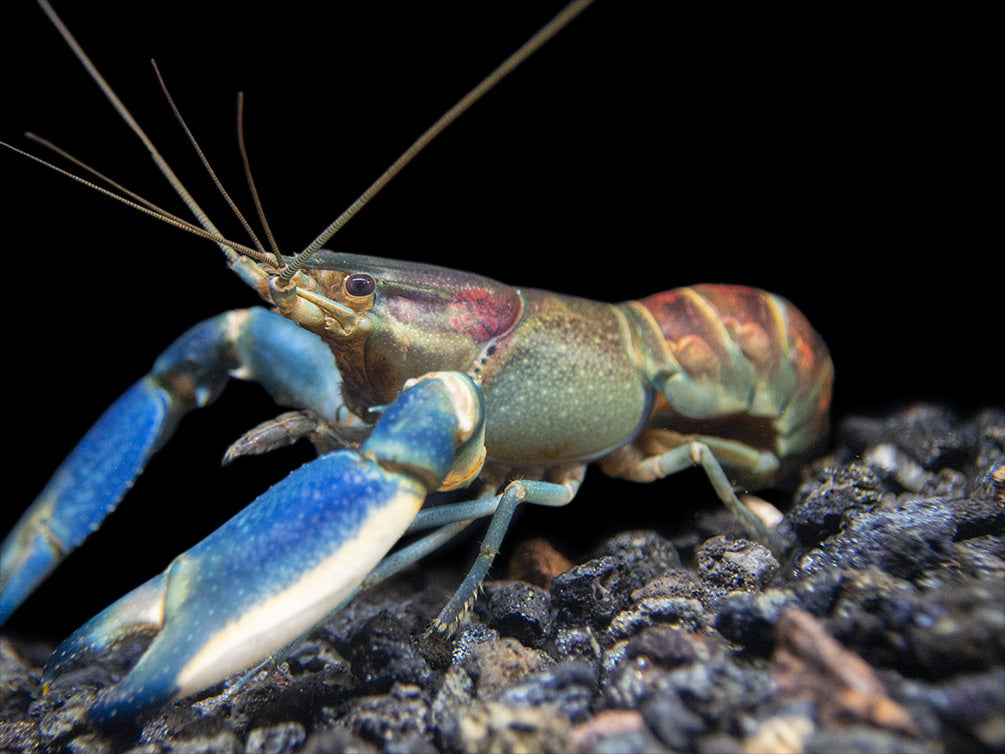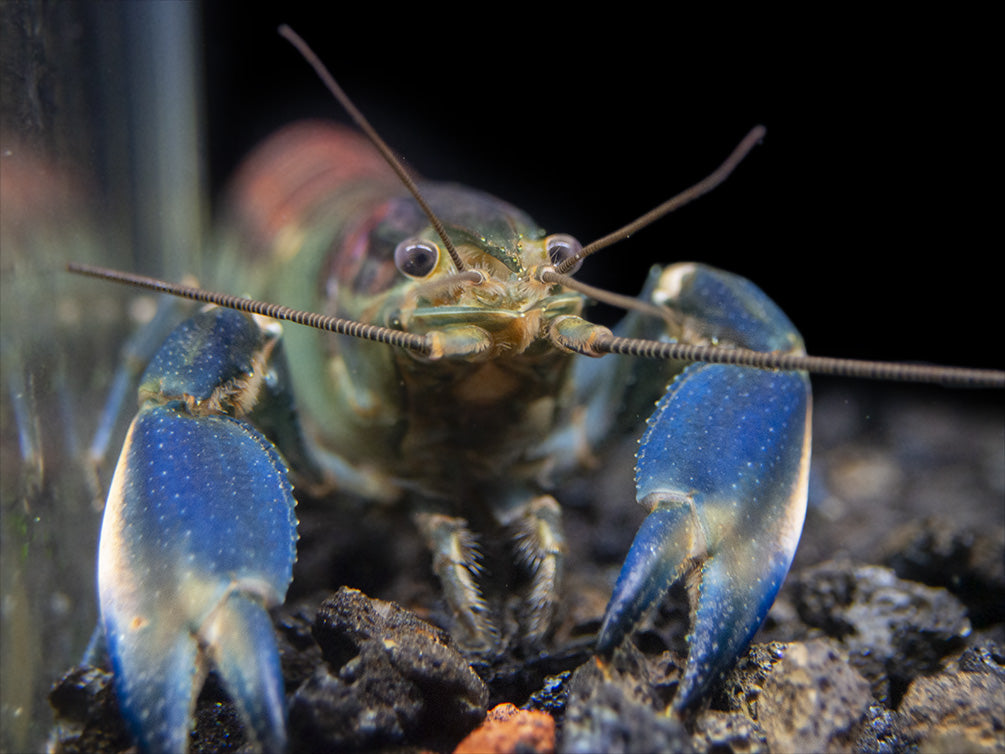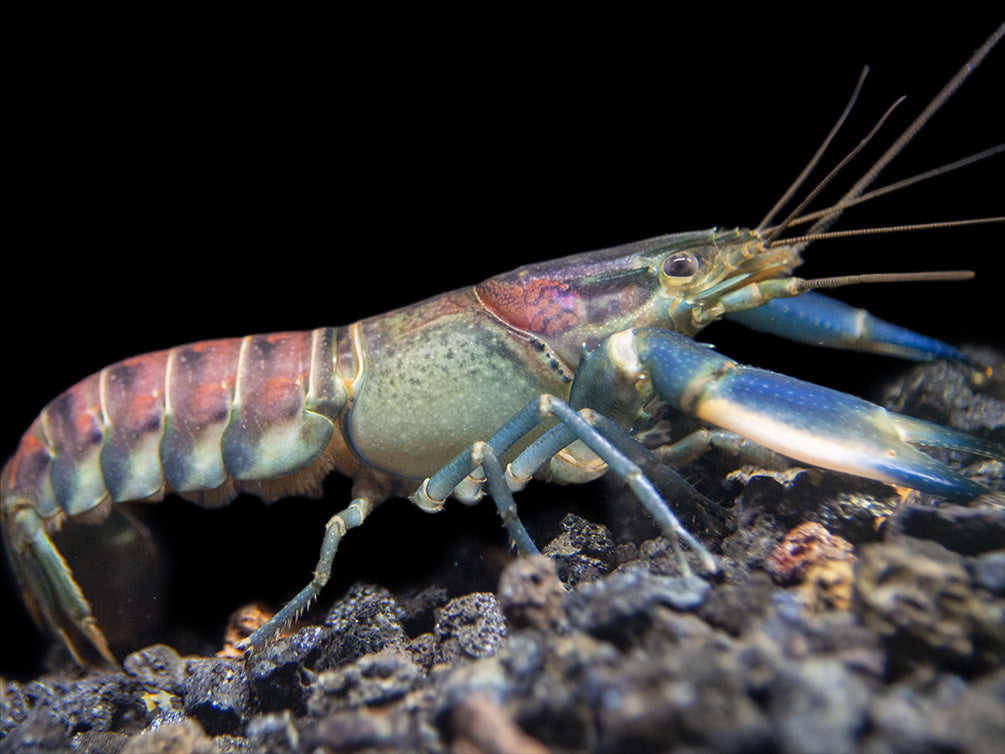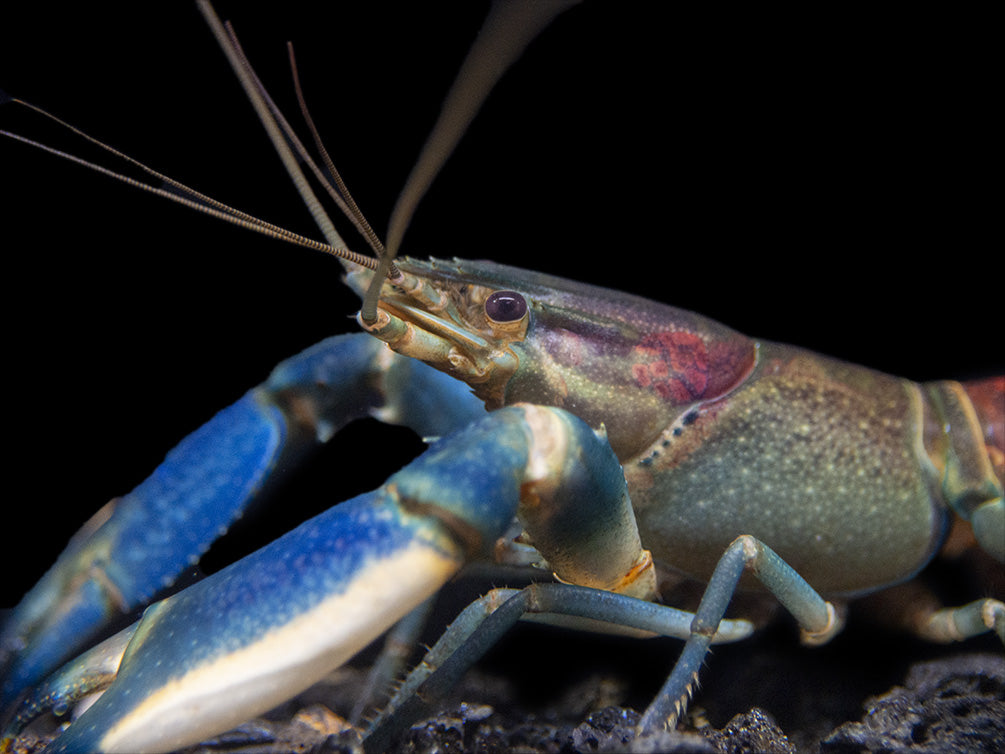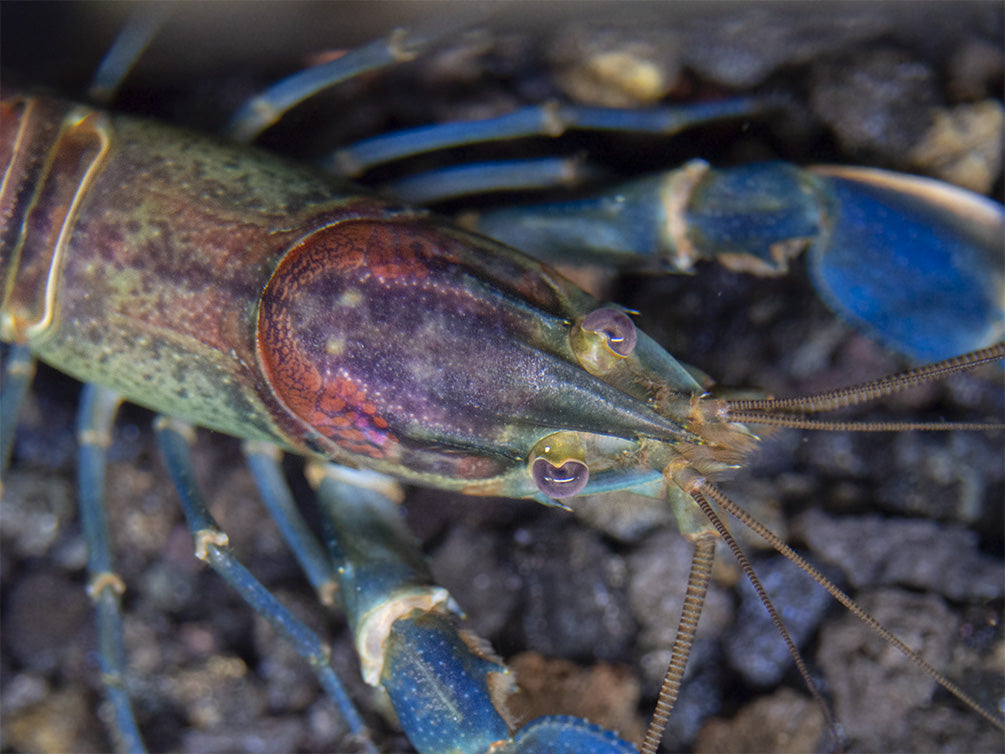Warsamson River Crayfish (Cherax Warsamsonicus)
- In stock, ready to ship
- Backordered, shipping soon
⚠️ Important Legal Note: Cherax species of crayfish are considered an invasive species in several U.S. states and is illegal to possess in any form or sell in: California, Florida, Maine, Texas, and Wisconsin. Please check your local regulations before purchasing. We are unable to ship this species to these states. If you reside in one of the above states and try to checkout with this crayfish in your cart you will be unable to checkout and receive an error message until the crayfish is removed from the cart.
* For the safety of our animals, we now ship cherax crayfish exclusively via UPS Next Day Air. If your order contains this item, you will only see UPS Next Day Air as a shipping option during checkout *
This is a very rare species is one of the world's most beautiful crayfish, and this is its natural, wild coloration!
The Warsamson River Crayfish (Cherax Warsamsonicus) is a newly discovered and extremely rare species of crayfish endemic to the Warsamson River drainage, in the western part of the Kepala Burung (Vogelkop) peninsula, West Papua, Indonesia. With its remarkably eclectic coloration, this crayfish is without a doubt one of the most unique-looking crayfish in the world. The Warsamson River Crayfish will breed in the aquarium with proper care, although the fry are extremely slow growing, especially compared to the many more common US crayfish species that are popular in the aquarium hobby. In fact, many of our specimens have bred in our tanks at our facility!
This particular crayfish is relatively active and spends plenty of time exploring the floor of the aquarium in search of food. The Warsamson River Crayfish is an omnivorous scavenger and will eat most any meaty or plant-based foods. This crayfish should not be kept with purely ornamental live plants as it will eat them at a surprising rate. While this crayfish can use some animal protein in its diet, it seems to show its greatest color, health, and breeding potential when it is fed a diet that is mostly plant matter, including peas (an excellent vegetable protein source) and carrots. Frozen peas and carrots are an excellent staple diet. They only need chopped into smaller pieces when feeding juveniles.
As it reaches adulthood, the Warsamson River Crayfish will become relatively territorial, so it may behave aggressively towards other animals in the tank. It is important that ample hiding places such as rockwork, driftwood, or PVC pipes be provided. This is even more crucial when housing multiple crayfish in the same tank. Due to the size and waste production of this crayfish, a minimum 30-gallon, well-filtered aquarium is necessary for one adult. A larger aquarium of 55 gallon or larger aquarium can house multiple adults of similar size. This is a reasonably hardy animal, but regular water changes are vital to its optimal health. Other bottom-dwelling invertebrates and fish should not be kept with large crayfish. It is possible to keep mid- and upper-level, fast-swimming fish with the Warsamson River Crayfish, but crayfish are opportunistic feeders and will generally eat whatever they can catch.
As with all of our crayfish, the coloration of the Warsamson River is EXTREMELY high quality - much higher quality than others on the market. This crayfish may TEMPORARILY change color and hide more than usual after molting, which may occur during shipping. If your crayfish has faded color and you find a molt in the bag or in your aquarium, do not worry; this is normal and the bright color will return in 2 weeks or less.
*IMPORTANT* Please "Choose a Variant" above before adding this crayfish to your cart. The variants we're currently offering are:
- 1 Male Crayfish - 2-3+ inch Adult
- 1 Female Crayfish – 2-3+ inch Adult
- 1 Male/Female Crayfish Pair – 2-3+ inch Adults
- 1 B-Grade Crayfish - 2-3+ inch Adult (All of our “B-Grade” crayfish are simply specimens that are missing legs or claws. Loss of appendages is not permanent and happens commonly with crustaceans. They are completely healthy with excellent coloration and will completely regenerate lost appendages within 1 to 2 molts, which is typically about 2 to 3 months.)
What We Like About This Crayfish:
- Similar stunning coloration to the Thunderbolt Crayfish
- Less aggressive than many other crayfish
- Easy to feed
- Excellent scavenger
- Fascinating and rewarding aquarium subject
RECOMMENDED TANK PARAMETERS:
- Temperature: 65°- 78° F (18° - 25° C)
- pH: 6.5 - 7.5
- KH: 6 - 15 dKH
- Minimum tank size: 30 gallons
CARE GUIDELINES:
- Diet: Crayfish are typically very easy to feed since they are mostly omnivorous scavengers. However, Cherax species can sometimes be a bit finicky. In addition to various plant matter, we have been feeding all of our Cherax crayfish frozen peas and carrots as well as frozen shrimp that is chopped into manageable pieces after thawing. We highly recommend that our customers at least initially offer this diet to their Cherax crayfish. In time, it is very likely that the crayfish will also accept high-quality dry foods, though a varied diet is required for optimal health, coloration, and activity. This species does best with a diet that is mostly vegetable matter.
- Social behavior: Can be aggressive/territorial with other crayfish, but is much less so than Procambarus species (such as the Electric Blue Crayfish). Crayfish will typically eat whatever they can catch, but since they are slow-moving, they are not often able to harm fast-moving fish
- Origin: West Papua New Guinea
- Average adult size: 5 - 6 inches (12.7 - 15.2 cm)
- Average purchase size: Adults: 3+ inches (7.6 cm)
- Recommended Aquatic Arts tankmates: Fast-moving fish (such as Celestial Pearl Danios, Rasboras, Guppies, etc.). While dwarf shrimp can be kept successfully with these crayfish, caution should be exercised, as the crayfish have been known to catch and eat slow, sick, or particularly small shrimp. Cichlids can be aggressive toward crayfish and should not be kept in the same tank. Bottom-dwelling tankmates should definitely be avoided.
All Aquatic Arts brand plants and animals come with a 100% live arrival guarantee, plus free email support!
For the safety of our animals, we only ship live fish, crabs, and select other inverts exclusively via UPS 1 Day Air. If your order contains this item, you will only see UPS 1 Day Air as a shipping option during checkout. If other items are in your cart that can ship with 2 day or standard shipping options the only shipping method you can still select is UPS 1 Day Air.
UPS 1 Day is a description of the duration of time a shipment will spend in transit once it has been shipped. This does not guarantee the package will be shipped the same or next day from which the order was placed.
Shipping Schedule for this service
Current Handling Time:
1-9 business days
Here at Aquatic Arts, we consider the welfare of the live animals we are shipping to be of the foremost importance. This process is much more involved than simply creating a shipping label and affixing it to a box. Depending on the order, it takes from 4 to 7 people to complete this process properly. We check the weather conditions here where they fly out of the Indianapolis UPS facility and the destination for each shipment. We start early each morning and go through a multi-step process to have the day's shipments prepared in time for the UPS pickup. The volume of orders in our system also affects the processing time. Therefore our stated handling time is 1-9 business days.
Shipping Rate
Pricing is by size of package needed to fill entire order and distance it must travel. It will be calculated at checkout.
